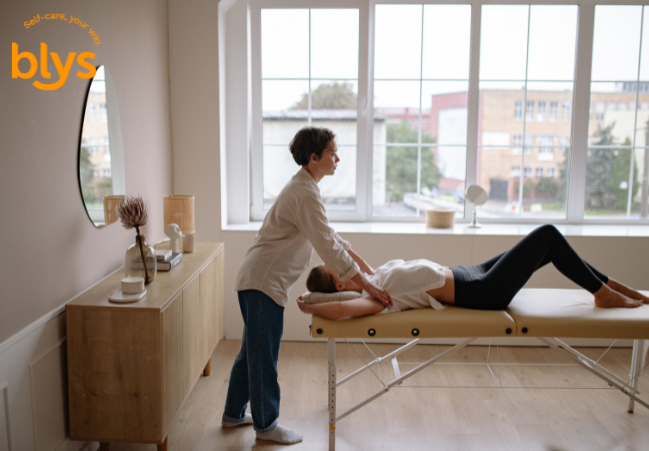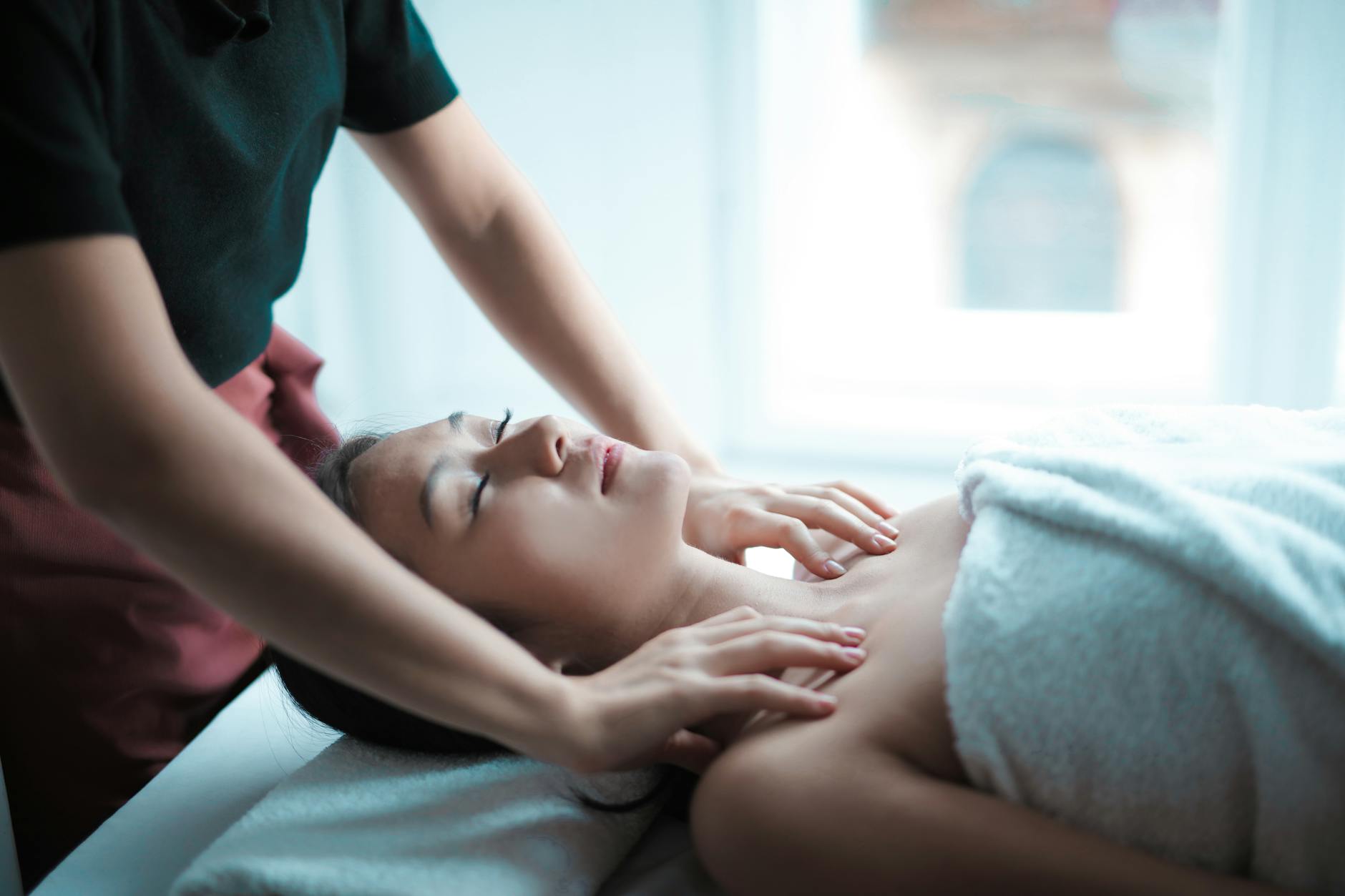
Recovering from surgery doesn’t end once you’re discharged from the hospital. In fact, the real work often begins at home, where pain management, mobility, and emotional well-being all play a role in how smoothly and safely you heal. Without proper support during this phase, many people experience slower recovery, increased discomfort, or even setbacks that could have been prevented.
One increasingly recommended approach to help with postoperative recovery is massage therapy. Clinical guidelines and emerging studies highlight how specific techniques like lymphatic drainage or remedial massage can reduce swelling, manage pain, and improve circulation. But getting to a clinic while you’re still recovering isn’t always practical or safe.
That’s where in-home massage therapists come in. Mobile massage therapy offers the same professional treatment as a clinic but without the physical strain or travel. Whether you’re recovering from cosmetic surgery, joint replacement, or abdominal procedures, a qualified therapist can come to your home, work around your schedule, and support your healing in a more personalized way.
Why Post-Surgery Recovery Needs More Than Just Rest
Taking it easy after surgery is essential but rest alone won’t get you back on your feet. Recovery is an active process that involves tissue repair, inflammation control, and circulation improvement. Each of these depends on more than just time; they require guided support.
Massage therapy can help encourage the body’s natural healing functions in several ways. By stimulating blood flow and lymphatic movement, it helps the body clear waste, reduce discomfort, and speed up recovery. This is especially important during the first few weeks after surgery when your mobility might be limited.
Lymphatic drainage and circulation support are key to minimizing:
- Swelling: Massage helps shift fluid away from the surgical area to reduce puffiness and pressure
- Bruising: Improved circulation assists in clearing pooled blood under the skin
- Tissue tightness: Gentle work on muscles and fascia can ease stiffness and discomfort
- Delayed healing: Supporting lymphatic function helps remove waste products and promote tissue repair
Massage can also complement your physiotherapy plan. While your physiotherapist focuses on movement and strengthening, your massage therapist can support pain relief and soft tissue recovery creating a more holistic approach to healing.
As the Australian Commission on Safety and Quality in Health Care notes, a multi-pronged recovery strategy involving allied health services leads to better outcomes and fewer complications.
How In-Home Massage Supports Recovery After Surgery
The recovery period after surgery can be unpredictable. Pain, swelling, emotional lows, and limited mobility are common, and without proper support, these issues can slow healing.
In-home massage therapy provides targeted care during this critical time, helping to ease physical discomfort and restore balance, all from the comfort of your own space.
Pain Management Without Relying Solely on Medication
Pain relief is usually the first priority after surgery. While medications like opioids are often prescribed, long-term use comes with risks such as dependency, digestive issues, and drowsiness.
Massage therapy can reduce the need for medication by promoting the body’s natural ability to manage pain. Techniques used during postoperative massage stimulate the release of endorphins and serotonin, two hormones that help reduce pain and improve mood.
According to clinical research, massage has been linked to a significant reduction in opioid use among surgical patients. This makes it a valuable option for individuals looking for a more holistic and sustainable approach to recovery, particularly after orthopedic surgeries like knee replacements, abdominal procedures, or cosmetic treatments such as liposuction or facelifts.
Improves Circulation and Reduces Swelling
Healthy circulation is vital for recovery. After surgery, many patients experience swelling due to fluid buildup or limited movement. Massage helps stimulate blood flow and lymphatic drainage, which supports the removal of waste and excess fluid from the body. As circulation improves, the affected area receives more oxygen and nutrients, accelerating tissue repair and reducing inflammation.
Lymphatic drainage techniques are especially helpful in post-surgical settings. These gentle movements can significantly reduce edema, promote detoxification, and help minimize the formation of scar tissue. Over time, this contributes to smoother, more comfortable healing.
Supports Mental Wellbeing During Recovery
Recovering at home can feel isolating, especially in the early days when mobility is limited. Emotional challenges like anxiety, irritability, and low mood are often overlooked. In-home massage can provide meaningful relief not just physically but emotionally.
The presence of a compassionate therapist, paired with calming techniques like slow strokes or aromatherapy, creates a soothing environment that supports relaxation, emotional release, and mental clarity.
Why Mobile Massage Therapy Is a Smarter Option
Post-surgery recovery comes with physical limitations, emotional stress, and a heightened need for rest. Travelling to a clinic during this time isn’t just inconvenient; it can also slow your progress. That’s why mobile massage therapy is increasingly seen as the smarter choice for postoperative care.
Rather than forcing your body through the stress of transportation, mobile massage allows you to stay in a familiar and supportive environment. There’s no need to sit in traffic, wait in lines, or risk exposure to bacteria in crowded spaces, all of which can be physically and mentally draining after surgery.
With in-home massage, your treatment becomes a personalized experience, centred on comfort and recovery. You can book sessions around your own schedule, in your own space, with a therapist who understands your specific needs.
Key benefits of choosing mobile massage therapy include:
- No need to leave home: Perfect for the early recovery phase when mobility is limited
- Less exposure to external germs: Reduces the risk of infection or complications
- More flexibility and control: Choose your therapist, massage type, and session length
- Tailored care in a familiar setting: Promotes deeper relaxation and faster recovery
With Blys, you also get peace of mind. All mobile massage therapists are qualified, insured, and experienced in post-surgical support. Whether you’re recovering from cosmetic procedures or orthopedic surgery, Blys helps ensure your care is professional, safe, and always on your terms.
Struggling with posture issues during your recovery? Massage therapy also plays a key role in posture correction, especially for those spending extended time resting or seated.
Types of Massage Most Suitable After Surgery
When it comes to post-surgical care, choosing the right type of massage is essential. Not every technique is appropriate for every stage of recovery, and working with a trained therapist who understands your condition makes all the difference. Here are three of the most effective massage types used to support healing after surgery each with its own purpose, timing, and benefit.
1. Lymphatic Drainage Massage
Lymphatic Drainage Massage (LDM) is often the first and most recommended massage after surgery, especially cosmetic procedures. This gentle, rhythmic technique helps stimulate the lymphatic system, which is responsible for clearing waste and excess fluid from the body. After surgery, lymph flow can slow down, leading to puffiness, swelling, and discomfort.
LDM encourages the movement of fluid away from the surgical site, reducing postoperative edema and promoting visible healing. It’s particularly beneficial for patients recovering from liposuction, facelifts, tummy tucks, and breast surgeries, where fluid retention and bruising are common. A study on post-liposuction recovery found that patients who received lymphatic drainage experienced less swelling and faster recovery times compared to those who did not.
Because it’s non-invasive and uses very light pressure, LDM is safe to begin within a few days after surgery often earlier than other massage types provided there’s medical clearance.
2. Remedial Massage
As you progress in your recovery, remedial massage becomes a valuable tool for regaining strength and mobility. This technique focuses on treating specific muscular pain, tightness, or dysfunction that may arise during the healing process. It’s particularly helpful for patients recovering from orthopedic surgeries like hip replacements, ACL repairs, or spinal procedures.
Remedial massage works by addressing scar tissue, muscle imbalances, and stiffness that may limit your movement. It can also improve circulation to deeper tissues, support tissue regeneration, and relieve compensatory pain in other areas of the body.
Each session can be tailored to suit your recovery phase starting with lighter strokes in early stages and progressing to deeper work as the tissue strengthens. A qualified therapist will assess your range of motion and adjust their approach to make sure the treatment is both effective and safe.
3. Relaxation Massage
Surgery often brings emotional strain, and recovery at home can feel isolating or stressful. Relaxation massage provides a calming, nurturing experience that supports both the mind and body. While not designed to target specific muscle groups, it plays a powerful role in reducing anxiety, promoting better sleep, and encouraging the body to shift into a healing state.
This type of massage is ideal for clients who are highly sensitive to touch, in the early stages of recovery, or simply need emotional support while healing. The soothing nature of this technique can also help reduce cortisol levels and enhance your overall well-being during a challenging time.
What to Expect From Your In-Home Massage with Blys
Booking an in-home massage with Blys means more than just convenience; it ensures that your post-surgery care is handled with professionalism, safety, and attention to detail. Every therapist on the Blys platform is fully vetted, qualified, and insured, with experience in tailoring treatments to suit your specific stage of recovery.
Before your session begins, your therapist will conduct a brief pre-treatment consultation. This includes a few questions about your surgery, current symptoms, and any advice you’ve received from your healthcare provider. This step ensures that the massage is safe and appropriate for your condition.
You can book with as little as a few hours’ notice, and Blys offers same-day availability in most metro areas across in the US. Appointments can be scheduled around your daily routine, giving you the flexibility to rest and recover on your own terms.
Here’s a quick guide to help you understand what to expect from each massage type available through Blys:
| Massage Type | Duration | Best For | Precautions |
| Lymphatic Drainage | 60 mins | Swelling, bruising, fluid retention | Not suitable if wounds are infected |
| Remedial Massage | 60–90 mins | Joint stiffness, post-op muscle recovery | Medical clearance may be required |
| Relaxation Massage | 60 mins | Stress relief, early-stage support | Adjust pressure based on comfort |
Each session is designed with your recovery goals in mind, offering not just physical relief but peace of mind knowing that you’re in safe hands.
If you’re also recovering from a sports-related injury, remedial massage can offer similar benefits by targeting pain, improving flexibility, and supporting long-term mobility.
When Is the Right Time to Start Massage After Surgery?
Starting massage too soon after surgery can do more harm than good, but waiting too long may delay some of the benefits. That’s why knowing the right time to begin is essential for safe and effective healing.
Always consult your surgeon or GP before booking a massage. They understand the details of your procedure and can advise when it’s medically appropriate to begin bodywork. The timing depends on your surgery type, how your wounds are healing, and whether there are any complications.
In general, most people can start massage within 7 to 14 days post-operation, once stitches are secure, swelling begins to ease, and your body has started to stabilize.
Here’s a general guide based on common scenarios:
- Lymphatic Drainage Massage (LDM): May be approved as early as 3–5 days post-op, especially after cosmetic procedures like liposuction or facelifts
- Remedial Massage: Usually introduced after two to three weeks, when deeper tissue work is safer
- Relaxation Massage: Can begin within 1–2 weeks for light touch and stress relief, depending on comfort
Every recovery process is unique. Your therapist will also assess your range of motion, wound sensitivity, and any ongoing symptoms to tailor the treatment accordingly.
Massage can be a valuable part of your recovery but only if it fits the right phase of healing. Getting professional clearance and working with a qualified therapist ensures your experience is safe, supportive, and aligned with your body’s needs.
Choosing a Therapist Who Understands Post-Surgical Needs
Not all massage therapists are trained to work with post-surgical clients and choosing the right one can make a major difference in your recovery. Working with someone who understands surgical timelines, tissue healing, and technique modifications ensures your treatment is both safe and effective.
Look for therapists with experience in remedial massage or lymphatic drainage massage, as these are the two most commonly recommended styles for postoperative care. These professionals know how to adapt pressure, avoid sensitive areas, and respond to signs of inflammation or scar tissue formation.
With Blys, you gain access to a network of fully qualified, insured mobile massage therapists across in the US. Many of them have additional training in postoperative massage and understand how to tailor treatments based on your type of surgery and recovery stage.
You’ll also have the option to rebook the same therapist for future sessions. This builds familiarity and consistency, two things that matter when you’re working through a multi-week healing process. A therapist who knows your case can adjust each session based on how your body is responding.
Need help choosing the right massage for recovery? Browse Blys therapists near you and book today.
Whether you’re after lymphatic drainage or general healing support, you’ll find someone who can help you feel better safely and comfortably, right at home.
Recovery with Care, Comfort, and Convenience With Blys
Surgery recovery can be challenging, but the right kind of support can make a world of difference. While massage is not a substitute for medical care, it’s a valuable addition to your recovery plan helping to ease pain, reduce swelling, and restore balance to both body and mind.
By improving circulation, supporting lymphatic flow, and promoting relaxation, massage therapy creates the conditions your body needs to heal efficiently. It also helps you feel more at ease during what is often a stressful and physically limiting time.
The convenience of mobile massage makes it even more accessible. With no need to travel, wait in clinics, or adjust to unfamiliar settings, you can focus on healing in the comfort of your own home. You’re in control of your space, your schedule, and your pace.
Whether you’re recovering from cosmetic surgery, joint procedures, or anything in between, having a qualified therapist come to you takes the pressure off and gives you one less thing to worry about.
Explore your options with Blys’ in-home mobile massage service and book a session that fits your recovery safely, professionally, and on your terms.





